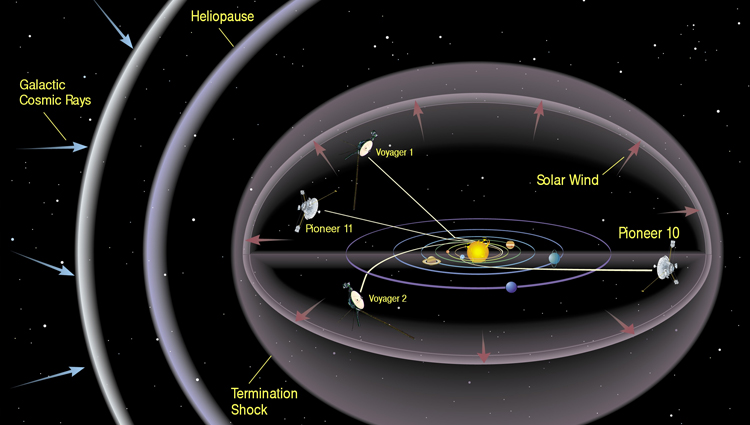Cosmic Rays And Star Longevity
New images help to determine the origin of cosmic rays.
Image

Media credits
WASHINGTON -- The Earth's atmosphere is constantly bombarded by tiny particles that rain down from space. Although astronomers named these bits of radiation cosmic rays over 80 years ago, they have not been able to prove where some of these space invaders come from.
New images taken by the ground-based very energetic radiation imaging telescope array system telescope array and the orbiting Fermi Gamma-Ray Space Telescope may help to solve this long-standing puzzle. Snapshots of distant galaxies presented at the 2009 Fermi Symposium on Nov. 2 in Washington support the prevailing idea that some of the cosmic rays that strike Earth may be the remnants of dead stars that violently exploded millions of years ago.
Cosmic rays can interfere with satellite communications and pose a health risk to humans during long spaceflights. They also help cosmologists understand the structure of the universe and have inspired the imaginations of many comic book writers, who tap them as a source of superpowers for their colorful heroes.
"This is the first time we've been able to look at cosmic rays in other galaxies," said Fermi team member Keith Bechtol of the SLAC National Accelerator Laboratory in Menlo Park, Calif.
Studying cosmic rays in our own galaxy has proven difficult.
It's like trying to see a forest from the inside, surrounded by trees, said Fermi team member Charles Dermer of the Naval Research Laboratory in Washington. Instead, scientists can use powerful telescopes to look at galaxies so distant that it takes millions of years for their light to travel to Earth.
From this distance, these telescopes cannot directly spot cosmic rays, which tend to stay stuck inside the galaxies in which they are made, "like liquid trapped in a bottle," said Jürgen Knödlseder of the Center for the Study of Space Radiation in Toulouse, France. But they can see gamma rays, a type of light that can have a trillion times more energy than visible light. Gamma rays are thought to be made when cosmic rays collide with a bit of gas or dust and can be traced back across vast regions of intergalactic space to the location of these collisions.
The VERITAS consortium detected high-energy gamma rays radiating from the starburst galaxy M 82, a star factory that churns out new stars 10 times faster than our own galaxy. By cosmic standards, stars in this galaxy are typically young, around 5 to 10 million years old and big about 20 times bigger than the Sun. Such stars live fast and furious lives for a million years and then die gloriously in explosion of energy called a supernova. Galactic cosmic rays are thought be generated either by supernovae, which release a massive tidal wave of high-energy particles, or by winds that big stars create when they lose mass.
The Fermi team found lower-energy gamma rays coming from M82 and from a second starburst galaxy called NGC 252. They also took a closer look at the nearest galaxy to our own Milky Way -- the Large Magellanic Cloud -- and traced gamma rays back to the Tarantula Nebula, a small area inside of the LMC where new stars are born and eventually die.
"This shows a clear connection between gamma rays and star formation," said Niklas Karlssen of the Adler Planetarium in Chicago, and team member of VERITAS, which published their findings in the latest issue of the scientific journal Nature.
